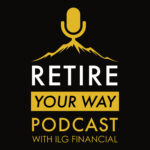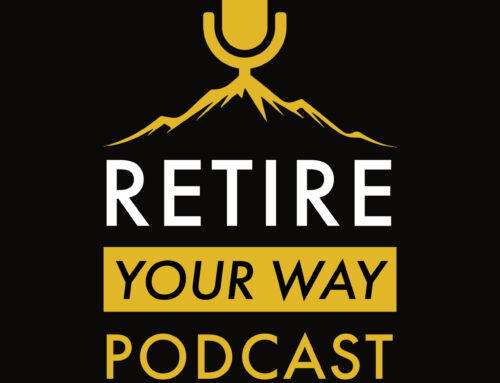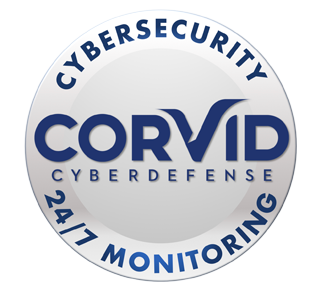 This past year highlighted small businesses more than any other. The impact from a struggling economy has not gone unnoticed and the support from local shoppers has made the difference between open and closed for many small business owners. If you own a small business, one thing is certain, the responsibility of retirement planning is square on your shoulders.
This past year highlighted small businesses more than any other. The impact from a struggling economy has not gone unnoticed and the support from local shoppers has made the difference between open and closed for many small business owners. If you own a small business, one thing is certain, the responsibility of retirement planning is square on your shoulders.
Unlike an employee who may have access to a 401(k), you’re on your own so you want to put the right plan in place. First, establish your goals for your retirement savings, then work through the options for how to build your savings.
Traditional or Roth IRA – This option is best for anyone just starting out. If you’re leaving a job to start a business, you can also roll your old 401(k) into an IRA. The contribution limit is $6,000 in 2020 and 2021 ($7,000 if age 50 or older). The tax advantage of this option includes either tax deduction on contributions to a traditional IRA or no immediate deduction for Roth IRA, but withdrawals in retirement are tax-free.
Solo 401(k) – This choice is good for a business owner or self-employed person with no employees (except a spouse, if applicable). The contribution limit is up to $58,000 in 2021 up from $57,000 in 2020 (plus a $6,000 catch-up contribution for those 50 or older) or 100% of earned income, whichever is less. The tax advantage of this choice is that the plan works just like a standard, employer-offered 401(k): You make contributions pre-tax, and distributions after age 59½ are taxed.
SEP IRA – Consider this option if you’re self-employed or a small business owner with no or few employees. The contribution limit: The lesser of $58,000 in 2021 ($57,000 in 2020) or up to 25% of compensation or net self-employment earnings, with a $285,000 limit on compensation that can be used to factor the contribution. The tax advantage to be found is that you can deduct the lesser of your contributions or 25% of net self-employment earnings or compensation—limited to that $285,000 cap per employee in 2020—on your tax return. Distributions in retirement are taxed as income.
SIMPLE IRA – This choice is best for larger businesses with up to 100 employees. The
contribution limit is up to $13,500 in 2020 and 2021 (plus catch-up contribution of $3,000 if 50 or older). If you also contribute to an employer plan, the total of all contributions can’t exceed $19,500.
The tax advantage for this choice is contributions are deductible, but distributions in retirement are taxed. Contributions made to employee accounts are deductible as a business expense.
Defined Benefit Plan – This can be a good option for a self-employed person with no employees, has a high income, and wants to save a lot for retirement on an ongoing basis. The contribution limit is calculated based on the benefit you’ll receive at retirement, your age and expected investment returns. The tax advantage: contributions are generally tax deductible, and distributions in retirement are taxed as income. An actuary must figure your deduction limit, which adds an administrative layer.
Small business owners have a lot to manage, so you need a partner that can take the burden of managing your savings plan off your shoulders. Contact us at (540) 720-5656 and let us guide you in finding the plan that will be best for you in 2021 and forward.























 Megan Jones joined the ILG Financial team in 2020 as marketing director. Megan and her husband live in Fredericksburg, VA with their German Short Haired Pointer, Gus. Megan is a graduate of Longwood University and holds a degree in communications. Megan is the oldest of Dave Lopez’s three children and not only enjoys working alongside her father, but also with her cousin, Chase, who joined the ILG Financial team in 2020 as an advisor. Megan is also a fully licensed Life, Health, and Annuity agent. When not at work, Megan enjoys sitting on the back porch with family and friends enjoying food and music.
Megan Jones joined the ILG Financial team in 2020 as marketing director. Megan and her husband live in Fredericksburg, VA with their German Short Haired Pointer, Gus. Megan is a graduate of Longwood University and holds a degree in communications. Megan is the oldest of Dave Lopez’s three children and not only enjoys working alongside her father, but also with her cousin, Chase, who joined the ILG Financial team in 2020 as an advisor. Megan is also a fully licensed Life, Health, and Annuity agent. When not at work, Megan enjoys sitting on the back porch with family and friends enjoying food and music. Chase Lopez joined the ILG Financial team in 2020 as an advisor. Chase is a 2016 James Madison University graduate with a degree in management. Chase has been trained under the tutelage of Dave Lopez, who is not only the founder and managing member of ILG Financial, but also is Chase’s uncle and godfather. He also enjoys working alongside his cousin, Megan, who is Dave’s daughter.
Chase Lopez joined the ILG Financial team in 2020 as an advisor. Chase is a 2016 James Madison University graduate with a degree in management. Chase has been trained under the tutelage of Dave Lopez, who is not only the founder and managing member of ILG Financial, but also is Chase’s uncle and godfather. He also enjoys working alongside his cousin, Megan, who is Dave’s daughter. Amy Anderson joined the ILG Financial team in 2023 as the client relations coordinator. Her responsibilities include scheduling of appointments, annual check-up notifications, and annuity and required minimum distribution assistance. She is a graduate of Harding University with a degree in Computer Information Systems. Amy and her husband have two children and she enjoys reading, crocheting, music and spending time with her family.
Amy Anderson joined the ILG Financial team in 2023 as the client relations coordinator. Her responsibilities include scheduling of appointments, annual check-up notifications, and annuity and required minimum distribution assistance. She is a graduate of Harding University with a degree in Computer Information Systems. Amy and her husband have two children and she enjoys reading, crocheting, music and spending time with her family. Jessica Carson joined the ILG Financial team in 2018 as an agent. Jessica and her husband have four children, two dogs, 3 barn cats, 5 chickens, and three parakeets. She indeed loves her children and pets! When not at work, Jessica enjoys playing the piano and cello as well as traveling and spending time outside with her family, hiking, fishing, and boating.
Jessica Carson joined the ILG Financial team in 2018 as an agent. Jessica and her husband have four children, two dogs, 3 barn cats, 5 chickens, and three parakeets. She indeed loves her children and pets! When not at work, Jessica enjoys playing the piano and cello as well as traveling and spending time outside with her family, hiking, fishing, and boating. Terri Center joined the ILG Financial team in 2019 as client services manager. She handles client records, application processing, and gathering information to provide a professional and friendly experience with all of our clients. Terri is a graduate of Oakland University. She is married and has two children. She enjoys hiking, family time, and puzzle challenging video games. She also likes to share her creativity in her canvas paintings and sewing projects.
Terri Center joined the ILG Financial team in 2019 as client services manager. She handles client records, application processing, and gathering information to provide a professional and friendly experience with all of our clients. Terri is a graduate of Oakland University. She is married and has two children. She enjoys hiking, family time, and puzzle challenging video games. She also likes to share her creativity in her canvas paintings and sewing projects.